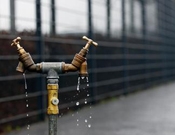Qatar is set to augment its water and electricity production capacity by launching new projects and enhancing existing infrastructure. Government agencies have signed agreements to meet production and distribution targets of the utilities by 2016, according to a 2012-2013 report released by the General Secretariat of the Council of Ministers.
The report said a separate study is underway to boost production of the utilities to meet projected demand in 2030.
A feasibility study on linking Qatar’s water network with the GCC is also underway.
A survey to identify ideal locations for new plants and transmission lines is fast progressing.
The report said an agency had been tasked to study the possibility of producing potable water from sea water through reverse osmosis technology and oversee implementation of a model to verify the success of the technique.
Another study is afoot to generate solar power for the farm sector as part of an agriculture production project launched by Qatar National Food Security Programme and to increase the production capacity to meet water demand in emergency situations.
Qatar’s water and electricity sector is working along with its GCC counterparts to develop a long-term strategy for water production and distribution.
It is also engaged in finalizing a draft study on linking the GCC electricity network with the Arab network with support of the World Bank and the Arab League.
To boost existing electricity transmission network, Qatar has enhanced the capacity of 162 transformers, spending about QR20m.
Qatar Water and Electricity Corporation (Kahramaa) has completed its consulting services with agencies ahead of distributing power to its major subscribers in North Doha, Barwa Village, Barzan and Lusail and at New Doha International Airport.
ifpinfo
14 August
























































